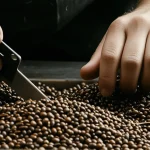Essential Elements of Traditional British Cuisine
Traditional British dishes are rooted deeply in staple foods that have nourished generations. At the heart of this cuisine are hearty, satisfying meals featuring ingredients like potatoes, root vegetables, and meats such as beef, lamb, and pork. These staples create the foundation for iconic dishes that are both comforting and reflective of Britain’s agricultural heritage.
Pies are a defining element of British cuisine. From the classic steak and kidney pie to the savoury chicken and mushroom options, pies combine flaky pastry with rich fillings, embodying the perfect balance between convenience and flavour. Alongside pies, roasts hold a cherished place, particularly the Sunday roast—a ritualistic meal with roasted meat, potatoes, Yorkshire pudding, and seasonal vegetables, bringing families together.
Also read : What Are the Essential Ingredients for a Traditional Yorkshire Pudding?
Beyond their ingredients, traditional British dishes stand apart from tourist-focused offerings by emphasising freshness and local sourcing. Comfort foods such as shepherd’s pie, bubble and squeak, and fish and chips are prepared with a focus on homely taste rather than flashy presentation. This culinary authenticity is what defines genuine British cuisine and distinguishes it in the global food landscape.
Navigating British Meal Times and Dining Customs
Understanding British meal times helps appreciate the rhythm of local life. The day often starts with a traditional breakfast, which includes staples like eggs, bacon, and beans. Lunch tends to be a lighter meal, commonly featuring sandwiches or soups. Afternoon tea follows, a semi-formal affair with tea, scones, and finger sandwiches, reflecting a cherished cultural ritual.
Topic to read : What Are the Essential Ingredients for a Traditional Yorkshire Pudding?
Dining etiquette in Britain values politeness and patience. When eating with others, waiting for everyone to be served before starting is customary. Saying “please” and “thank you” is expected, and handling cutlery in the continental style (fork in left hand) is common.
Pub culture plays a significant role in British dining customs. Ordering food in a pub usually involves going to the bar rather than waiting for table service, a practice important to know for visitors. Typical pub fare includes items like fish and chips or bangers and mash, showcasing traditional dishes in a relaxed setting.
Being aware of these local food culture nuances not only enriches your experience but also shows respect to British social customs. Whether at home or in public, recognising and adapting to these meal times and dining etiquette enhances enjoyment and interaction.
Essential Elements of Traditional British Cuisine
Traditional British dishes revolve around staple foods that provide both nutrition and cultural identity. These staples include potatoes, root vegetables like carrots and parsnips, and a variety of meats such as beef, lamb, and pork. Such ingredients form the backbone of British cuisine, showcasing its robust and unpretentious nature.
Key to traditional British dishes are pies, which blend flaky pastry crusts with rich fillings—steak and kidney pie or chicken and mushroom are prime examples. Pies offer convenience and flavour in equal measure and are deeply woven into local culinary traditions. Alongside pies, roasts—particularly the Sunday roast with its roasted meat, crispy potatoes, and Yorkshire pudding—serve as a communal meal, highlighting British values of family and togetherness.
Comfort foods also play a significant role in British food culture. Dishes like shepherd’s pie and bubble and squeak emphasize simple, hearty flavours and local ingredients. These offerings distinguish genuine British eating experiences from tourist-focused food that often prioritizes presentation over authenticity. Embracing the staple foods and these comforting recipes provides insight into the essence of British cuisine and its enduring appeal.
Essential Elements of Traditional British Cuisine
British cuisine centers on staple foods like potatoes, root vegetables, and a variety of meats such as beef, lamb, and pork. These ingredients are essential to traditional British dishes, forming a nourishing and robust dietary base that echoes the country’s agricultural roots. What distinguishes British cuisine from tourist-focused offerings is its emphasis on hearty flavours and authenticity rather than elaborate presentation.
Among the most iconic foods are pies—such as steak and kidney or chicken and mushroom—which combine flaky pastry with rich, comforting fillings. Pies are a hallmark of British cooking, blending convenience with satisfying tastes. Roasts, especially Sunday roasts with roasted meat, potatoes, and Yorkshire pudding, play a central cultural role, embodying family gatherings and tradition.
Comfort foods like shepherd’s pie and bubble and squeak further illustrate British cuisine’s focus on simplicity and tradition. These dishes utilize the core staple foods to deliver warmth and familiarity. By embracing these elements—pies, roasts, and comfort foods—one truly experiences the essence of authentic British cuisine.
Essential Elements of Traditional British Cuisine
British cuisine thrives on staple foods—potatoes, root vegetables, and meats like beef, lamb, and pork—that lay the groundwork for many traditional British dishes. These ingredients reflect Britain’s agrarian past and provide hearty sustenance that defines the cuisine’s character. What sets British food apart from tourist-focused offerings is its commitment to authenticity, favouring robust, homely flavours over elaborate presentation.
Among the most revered elements are pies, such as steak and kidney or chicken and mushroom. These dishes marry flaky pastry with rich fillings, offering convenience without sacrificing taste. Roasts, particularly the Sunday roast, highlight the communal and cultural importance of food, combining roasted meat with potatoes and Yorkshire pudding to create a meal centered on family and tradition.
Comfort foods like shepherd’s pie and bubble and squeak also showcase the cuisine’s emphasis on unpretentious, satisfying meals. These dishes utilize local staple foods to deliver warmth and familiarity, making British cuisine distinctively comforting and approachable. Embracing pies, roasts, and comfort foods provides a true window into the essence of traditional British dishes and their enduring cultural significance.
Essential Elements of Traditional British Cuisine
Traditional British dishes showcase a harmony of staple foods such as potatoes, root vegetables, and various meats that anchor the cuisine’s flavour and nutritional value. These ingredients reflect the practicality and seasonality prized in British cuisine, distinguishing it through its focus on hearty and authentic meals rather than elaborate presentation.
Pies stand out as quintessential components, with varieties like steak and kidney or chicken and mushroom offering a perfect blend of flaky pastry and rich fillings. Their enduring popularity stems from combining convenience with comforting tastes, deeply integrated into everyday dining.
Roasts, especially the Sunday roast, are culturally significant, uniting family and friends over a meal featuring roasted meats, potatoes, and Yorkshire pudding. This ritual highlights the communal aspect central to traditional British dishes.
Comfort foods such as shepherd’s pie and bubble and squeak further illustrate the cuisine’s rootedness in wholesome, accessible fare made from core staple foods. These dishes celebrate utilising leftovers and simple ingredients to create satisfying meals, reinforcing British food’s reputation for warmth and authenticity.
Together, pies, roasts, and comfort foods embody the heart of British cuisine, offering an insightful view of the country’s culinary traditions and values.












